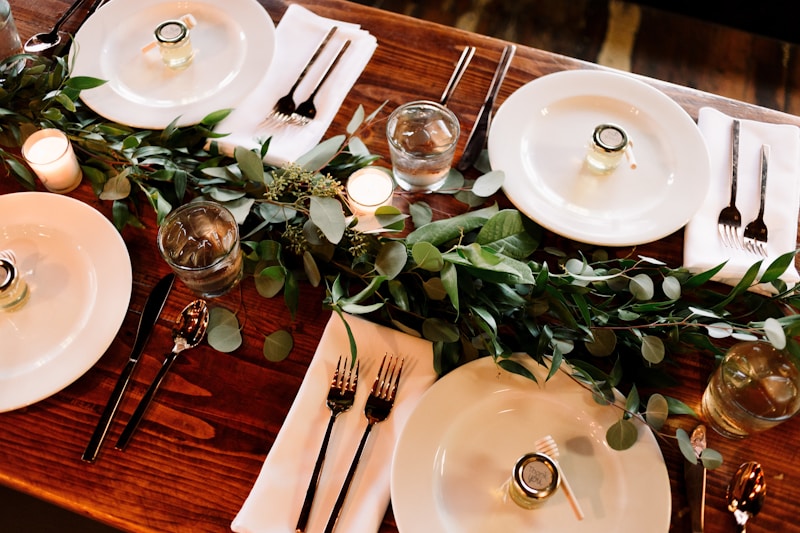Exploring Bridal Fashion During Significant Eras: A Journey Through Time
Exploring Bridal Fashion During Significant Eras: A Journey Through Time
Bridal fashion has always been a reflection of cultural, social, and historical changes. Throughout the ages, weddings have evolved into grand celebrations that often symbolize the union of two families, and the attire worn by brides showcases the trends and styles of the time. In this article, we will delve into the fascinating evolution of bridal fashion during significant eras, highlighting the unique characteristics that define each period.
The Victorian Era (1837-1901)
The Victorian era marks a significant period in bridal fashion, primarily characterized by the influence of Queen Victoria. In 1840, Queen Victoria wore a white gown for her wedding to Prince Albert, a choice that revolutionized bridal attire. Before this moment, brides typically wore their best dresses in various colors. The introduction of the white wedding dress became a symbol of purity and sophistication.

| Element | Description |
| Color | Predominantly white and ivory |
| Silhouette | Full skirts with voluminous petticoats |
| Fabric | Silk, satin, lace |
| Decoration | Heavy embellishments, floral details |
The Victorian bridal gown was often adorned with intricate lace and embroidery, emphasizing a bride's social status. Sleeves were typically long, and the silhouette was structured, creating a modest and elegant look. Bridal accessories like veils and bouquets also became popular during this era, adding a touch of romance to weddings.
The Roaring Twenties (1920s)
Moving forward to the 1920s, the Roaring Twenties brought about a dramatic shift in bridal fashion, reflecting the liberation and exuberance of the decade. Brides began to embrace more relaxed fits and shorter hemlines, departing from the strict styles of previous decades. The flapper style influenced bridal gowns, characterized by drop waists and intricate beadwork.
The 1920s bridal gown often featured:
- Silhouette: Straight and elongated, often with a dropped waist.
- Fabric: Lightweight materials like chiffon and silk.
- Decoration: Beaded patterns and sequins.
This era also highlighted the popularity of headpieces, such as cloche hats or feathered headbands, which added a modern twist to traditional bridal attire. The departure from highly structured gowns allowed brides to feel more free and expressive on their special day.
The Post-War Era (1950s)
The 1950s marked a return to traditional values, reflected in the bridal fashion of the time. Following World War II, many couples aspired for stability and classic beauty in their weddings. The iconic hourglass silhouette dominated bridal designs, featuring full skirts and fitted bodices that exuded femininity.
| Aspect | Details |
| Skirt Style | Tea-length or full-length skirts with crinolines |
| Neckline | Sweetheart, off-the-shoulder, or boat neck |
| Accessories | Cathedral-length veils and gloves |
Brides during this era often opted for luxurious fabrics like taffeta and silk, incorporating intricate lace details. Prominent designers, such as Christian Dior, influenced bridal fashion extensively, making it a glamorous affair. The combination of elegance and classic styles continued to set the standard for future bridal fashion.
The Modern Era (2000s-Present)
In recent years, bridal fashion has embraced diversity and innovation, reflecting the individuality of modern brides. The ongoing globalization of fashion has made it easier for brides to mix and match elements from different cultures and styles. Current trends feature a blend of traditional and contemporary designs, where brides can choose from a wide array of silhouettes, fabrics, and colors.
- Trends: Many brides are choosing colored gowns or non-traditional styles, such as pantsuits or separates.
- Eco-conscious choices: Sustainable fabrics and designs are becoming a preference for environmentally aware couples.
- Influence of Social Media: Platforms like Instagram and Pinterest play a significant role in shaping bridal trends.
The rise of personalized weddings also encourages brides to incorporate their unique styles. Customization in gowns and accessories allows brides to tell their stories through their attire. This shift has made weddings not only a union of love but also a celebration of personal expression.
Conclusion
Bridal fashion is a captivating journey that has evolved through various significant eras, each with its unique style and influences. From the Victorian era's elegance to the modern bride's individuality, each period offers a glimpse into the cultural shifts and societal changes that shaped bridal attire. Today’s brides have access to a range of styles, allowing them to embrace traditions while expressing their personal tastes.
When planning your wedding and selecting your bridal attire, consider the influences of different eras and choose a style that resonates with your personality. Whether you prefer a classic white gown or a modern twist, your bridal fashion should reflect who you are on this special day. Remember, the most crucial aspect is to feel confident and beautiful, making your wedding one to remember.
Tips and Considerations:
- Research styles from different eras to find what inspires you.
- Try on various silhouettes to see what flatters your figure best.
- Don’t shy away from customization to make your dress truly unique.
- Consider the season and location of your wedding when choosing fabrics.
Your wedding day is a celebration of love, and your bridal fashion should encapsulate that joy, showcasing your unique style while honoring the rich history of bridal attire.
